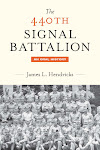While the first platoon of A Company was arriving at Port Moresby and getting settled in, the remainder of the battalion was speeding up construction work in Australia. Temporary camps were placed at various locations for B Company to begin work on the line from Charters Towers to Hillgrove. Long segments of the line were being completed every day as advanced camps were set up at Clarke River and Orangevale.
If the heat during the day and lack of an adequate water supply were not enough to make living conditions difficult, another problem had accompanied the men as they advance deeper into the outback. Flies! Flies by the millions - at times clouds of them - were a constant companion. They swarmed around the head and face of every man. What had been a nuisance was now becoming a health problem: maintaining proper sanitary conditions with food was impossible. Nothing could be done and it was simply a situation which had to be endured. Flies or no flies, there were miles of line to be constructed.
Working well into October, elements of the remaining A Company as well as B Company put up many miles of line between and around the cities of Fairview Station and Wilton, as well as the Clarke River area. The work was exhausting with temperatures soaring well over 100 degrees during the day and remaining hot all night. The heat, work and lack of proper food was beginning to take a toll and more and more of the men were becoming ill.
There was an almost complete lack of roads near or leading to the work areas and this only added another layer of problems the battalion faced. Bringing men and materials to the construction sites resulted in lost time and increased effort. The work areas did, however, nearly always follow a rail line. Yankee ingenuity stepped to the plate and hit a homer. One of the motor officers, Lieutenant French, instructed his men to weld standard jeep and truck wheels to railway wheels. For a moment in history the men of the 440th became railroaders.
On October 18, The remaining men of A Company departed Townsville aboard the 'John Steel', to rejoin their fellow company members in New Guinea. The total strength of the battalion - including the advance detachments now in New Guinea - totaled 20 officers and 544 enlisted men. That number varied little from the time they left San Francisco to the middle of 1945.
By mid November, the remainder of the battalion had broken all camps and regrouped in Townsville, boarding a train on the 25 and arriving on the 27th at Mt. Isa, located hundreds of miles west of their starting point. Thanksgiving dinner consisted of field rations. As usual, the meal was accompanied by waves of flies and the worst wilting heat the men had experienced since arriving in Australia. The only bright spot shining on their daily life was a mobile refrigerator they had recently obtained. This allowed the cooks to receive and store small amounts of fresh meat and produce . . if and when they could find them.
The next project was to begin a line from Cloncurry to Darwin, a distance of about 1,000 miles. This work was again to be broken into several shorter segments and each working toward the others. The project was also shared with the 436th Signal Construction Battalion (Avn) and the Australian Signal Troops. The start of this project would take them to Christmas.
Christmas 1942 would be their first Holiday Season away from family and home. For most of the men - young and old alike - it was a hard and difficult time. The war in the Pacific seemed to be turning a little in favor of the allied troops. Many men in the 440th were thinking that they could possibly be home for the following Holidays.
They could not have imagined just how long it would be before they returned home again.
skip to main |
skip to sidebar
Documenting the 65-year history through personal stories, photographs, and other records
Please provide your story!
Were you in the 440th? Do you have a story to tell? A photograph to share? Share your story here.
The 440th Signal Battalion: An Oral History
Visit the book website here.
Other Sites of Interest
Search This Blog
Blog Archive
-
►
2007
(3)
- ► 07/08 - 07/15 (1)
- ► 11/11 - 11/18 (1)
- ► 12/23 - 12/30 (1)
-
▼
2008
(5)
- ► 01/27 - 02/03 (1)
- ► 02/10 - 02/17 (1)
-
►
2009
(1)
- ► 10/11 - 10/18 (1)
-
►
2010
(1)
- ► 06/20 - 06/27 (1)
About Me
- James L Hendricks
- I was drafted in September 1952 and, after basic training and signal school, assigned to the 440th Signal Battalion. In June 1954 I was honorably discharged after serving in Korea. I recently finished writing a book about the battalion’s sixty-five-year history--The 440th Signal Battalion: An Oral History.



